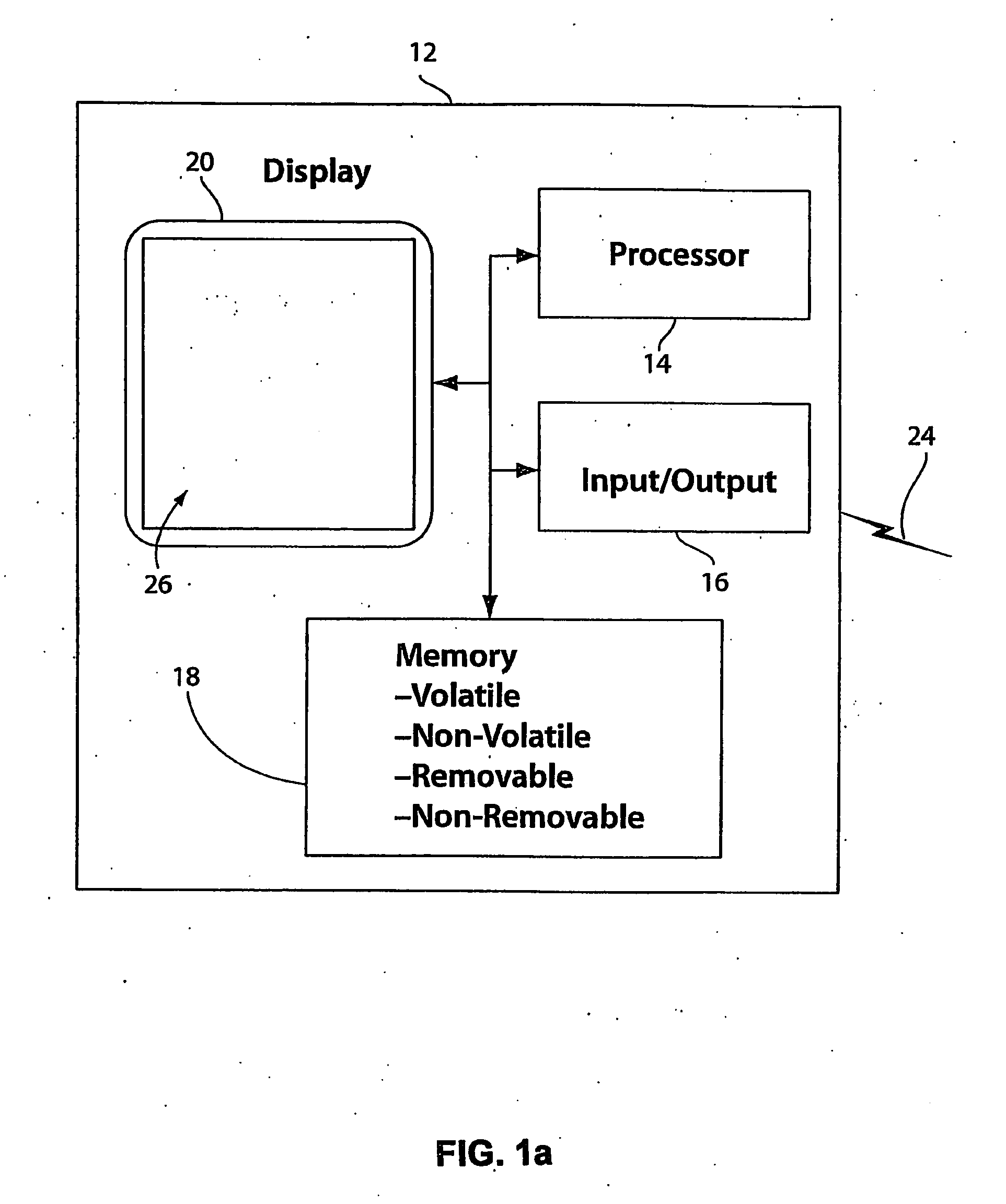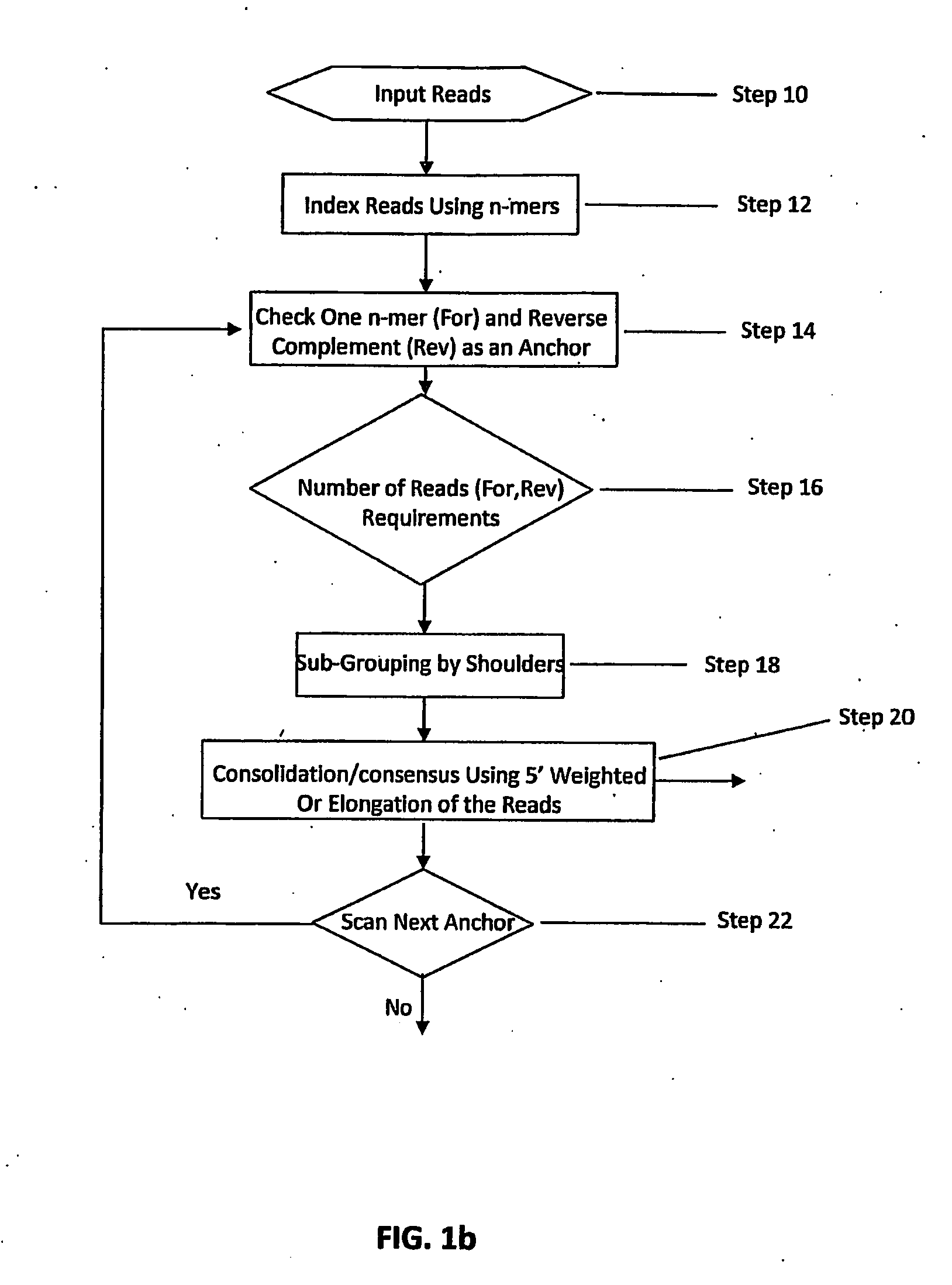DNA Sequence Assembly Methods of Short Reads
a dna sequence and assembly method technology, applied in the field of bioinformatics, can solve the problems of not allowing the sequencing of very large dna fragments, shreds may be completely unrecognizable, etc., and achieve the effect of reducing the total read count and reducing the error of consensus sequences
- Summary
- Abstract
- Description
- Claims
- Application Information
AI Technical Summary
Benefits of technology
Problems solved by technology
Method used
Image
Examples
Embodiment Construction
[0036]With reference to FIG. 1a, a diagram of an exemplary computing device 12 for implementing a sequence assembly system is shown. In a basic configuration, computing device 12 comprises a processing portion 14, a memory 18, and a display portion 20. Depending upon the exact configuration and type of computing device 12, memory 18 can be volatile (such as RAM), non-volatile (such as ROM, flash memory, etc.), or some combination thereof. Computing device 12 also can include additional features / functionality. For example, computing device 12 also can include additional storage (removable and / or non-removable) including, but not limited to, magnetic or optical disks or tapes. Such additional storage is illustrated in FIG. 1a as part of memory portion 18. Computer storage media includes volatile and non-volatile, removable and non-removable media implemented in any method or technology for storage of information such as computer readable instructions, data structures, program modules,...
PUM
 Login to View More
Login to View More Abstract
Description
Claims
Application Information
 Login to View More
Login to View More - R&D
- Intellectual Property
- Life Sciences
- Materials
- Tech Scout
- Unparalleled Data Quality
- Higher Quality Content
- 60% Fewer Hallucinations
Browse by: Latest US Patents, China's latest patents, Technical Efficacy Thesaurus, Application Domain, Technology Topic, Popular Technical Reports.
© 2025 PatSnap. All rights reserved.Legal|Privacy policy|Modern Slavery Act Transparency Statement|Sitemap|About US| Contact US: help@patsnap.com



